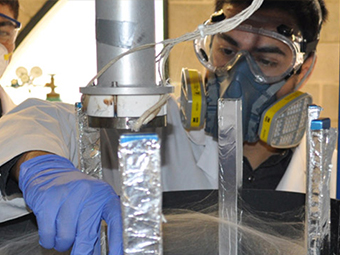Document Type
Article
Publication Date
3-30-2024
Abstract
Implantable biosensors have evolved to the cutting-edge technology of personalized health care and provide promise for future directions in precision medicine. This is the reason why these devices stand to revolutionize our approach to health and disease management and offer insights into our bodily functions in ways that have never been possible before. This review article tries to delve into the important developments, new materials, and multifarious applications of these biosensors, along with a frank discussion on the challenges that the devices will face in their clinical deployment. In addition, techniques that have been employed for the improvement of the sensitivity and specificity of the biosensors alike are focused on in this article, like new biomarkers and advanced computational and data communicational models. A significant challenge of miniaturized in situ implants is that they need to be removed after serving their purpose. Surgical expulsion provokes discomfort to patients, potentially leading to post-operative complications. Therefore, the biodegradability of implants is an alternative method for removal through natural biological processes. This includes biocompatible materials to develop sensors that remain in the body over longer periods with a much-reduced immune response and better device longevity. However, the biodegradability of implantable sensors is still in its infancy compared to conventional non-biodegradable ones. Sensor design, morphology, fabrication, power, electronics, and data transmission all play a pivotal role in developing medically approved implantable biodegradable biosensors. Advanced material science and nanotechnology extended the capacity of different research groups to implement novel courses of action to design implantable and biodegradable sensor components. But the actualization of such potential for the transformative nature of the health sector, in the first place, will have to surmount the challenges related to biofouling, managing power, guaranteeing data security, and meeting today’s rules and regulations. Solving these problems will, therefore, not only enhance the performance and reliability of implantable biodegradable biosensors but also facilitate the translation of laboratory development into clinics, serving patients worldwide in their better disease management and personalized therapeutic interventions.
Recommended Citation
Alam, F.; Ashfaq Ahmed, M.; Jalal, A.H.; Siddiquee, I.; Adury, R.Z.; Hossain, G.M.M.; Pala, N. Recent Progress and Challenges of Implantable Biodegradable Biosensors. Micromachines 2024, 15, 475. https://doi.org/10.3390/mi15040475
Creative Commons License

This work is licensed under a Creative Commons Attribution 4.0 International License.
Publication Title
Micromachines
DOI
10.3390/mi15040475



Comments
© 2024 by the authors. Licensee MDPI, Basel, Switzerland